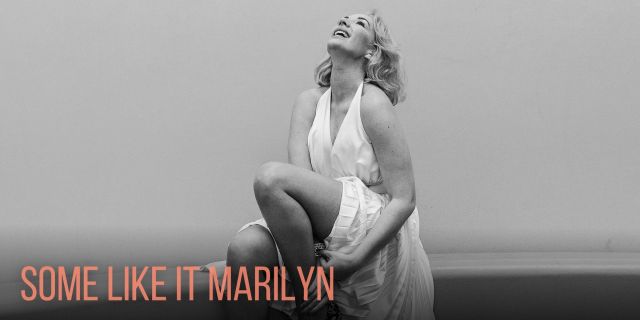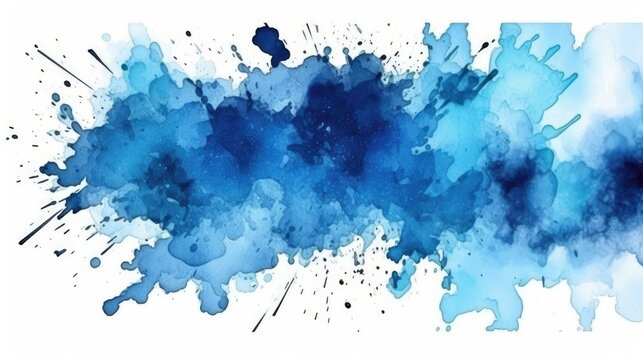- Bombshells - Echo Theatre, The Q: A great night out at the theatre is presented by six women delivering monologues that encompass the highs and lows of their lives. Director Jordan Best has them remain on stage throughout, whether they are having their moment in the spotlight or not, and the interactions between them as they segue between scenes are as sharp as the main content. There is no question that Joanna Murray-Smith writes incisive pieces for women, and these explorations of what it means to be a woman of any age in this strange, competitive world of ours are equally sharp and sparkling. Lainie Hart plays the ageing cabaret singer who can't quite move on from the end of her career; Ella Buckley is the blushing bride-to-be who isn't sure this is what she wants after all; Amy Kowalczuk portrays the exhausted young mother, desperate for reassurance that she's doing something right; Sally Taylor is hilarious as the precocious teenager with a talent routine that falls woefully short; Kate Harris bites back her anguish as she tries to hold her life together while delivering a TED talk on cacti; and Alice Ferguson brings the house down with some old lady wish fulfilment fantasy. At ninety minutes with no interval, this play delivers a lot of laughter and a range of emotions. I just wish that togetherness was one of them.
- Mary Stuart - Chaika Theatre, ACT Hub: There is some interesting staging with a crucifix formation, and a bold interpretation of the dance/ meeting scene as the two queens, Mary Queen of Scots and Elizabeth I meet in an encounter that never actually happened. Steph Roberts is strong in the titular role, playing the likeable aspects of the character with humour and sensitivity. Karen Vickery also displays strength as Elizabeth I, but comes over as bold rather than regal, and the fear and vulnerability inherent in the role are also lacking. The dynamic relationship she shares with Leicester is given a manipulative and conniving presence by Jarrad West, playful and/ or pragmatic as required. Of the supporting cast, Cameron Thomas stands out as Paulet with great dramatic energy, exquisitely embodying the conflicting emotions between the personal and political. Kathleen Kershaw's set design provides obvious points of strength, hierarchy and balance, and the execution block/ stone is a provocative dichotomy. More light and shade from Disa Swifte's lighting design would have better highlighted the fear and paranoia. Contemporary costumes (Kathleen Kershaw again) are a bold stylistic choice, which works better in concept than performance (whereas the masquerade outfits are striking, some costumes hamper movement). Overall, some curious actor choices result in one-sided presentation, and, despite the very strong leads, there is a lack of intensity, and the stakes don't appear to be played high enough.
- The Lord of the Flies - Canberra Repertory Society, Theatre 3: There is a theatre adage that states if you put on plays featuring lots of young people, you will get large audiences, as all the parents, friends and family are strongly encouraged to see it. This may be the case, but it does generally mean the production will be full of youngsters of greatly varying acting abilities. This production is action-packed, but lacking in shade or nuance; it hits a high intensity early that it struggles to sustain. While there are some excellent creative design and production elements (the set by Michael Sparks evokes atmosphere and location differentiation, and the lighting by Chris Ellyard conjures mood with shifts in tone and a sense of dread), but there are issues with the actors - too much shouting loses clarity and the young directors (Caitlin Baker and Lachlan Houen) have no understanding of class distinctions. The schoolkids cut adrift on an island, having to organise themselves to collectively survive is a metaphor for life, and this concept seems to be beyond some of the cast. Robert Kjellgren is disturbingly calm and direct in his convincing portrayal of the psychopath, Roger and Ty MaKenzie as Jack has great energy, indulging in totalitarian bully tactics to disguise deep insecurities. The gender blind casting is essential to both modernise the play and accommodate the auditionees, but the necessary machismo is missing from some actors, who come across as whiny and irritating rather than empathetic.
- Some Like It Marilyn - Lexi Sekuless Productions, The Mill Theatre: The Mill Theatre presents plays with previews attached. The preview may be paused while technical elements are adjusted, and at the end the audience feedback is ploughed back into the next night's performance as it is tweaked and enhanced. There is very little to perfect in this production in which Lexi Sekuless embodies one of the most iconic figures of the twentieth century in a sort of cabaret, highlighting moments from her career ranging from singing to interviews, to photo-shoots and letters. Helen McFarlane as Jane Russell pairs with Sekuless in impressive duets, while other characters (managers; beaux; fellow actors; media; stalkers) are played by Tim Sekuless and Mark Lee. Music (Leisa Keen) is wonderfully harmonious - the night I saw it backing tracks were employed, but I think they will be ditched for the true performances - and the choreography (Annette Sharpe) is eminently suited to each performer. The set by Sam Thomas is simple but effective, including a grille to recreate the iconic skirt lift scene from The Seven Year Itch, and the costumes are a delight, as Tania Jobson has designed everything from the pink satin sheath gown in which Marilyn sings Diamonds are a Girl's Best Friend, to the sexy bed sheet in which she was famously interviewed. The show portrays Marilyn as fun, charming, glamorous and smart; not just a 'dumb blonde', she was the first woman (since silent film star, Mary Pickford), to found her own production company, Marilyn Monroe Productions, in 1955. Who wouldn't like it Marilyn?
- August Osage Country - Free-Rain Theatre Company, ACT Hub: I also saw Free-Rain's production 2014 production, but the power of this one is that it swiftly eradicated that one from my mind. It may be inevitable with this play but it feels a little 'stagey' and disjointed - the scenes where everyone is talking at once are the best, as the audience can make up their own mind where to look. Some things are staged in less prominent areas, and it would be itneresting to know where the director feels the focus of this play is. Violet, the matriarch of the dysfunctional family, is a vehicle for a strong actor and Karen Vickery fits that definition with aplomb. It's hard not to feel sorry for someone living with cancer, but she made me do it. The supporting cast all excel in their roles either as family members, in-laws or additional characters, and fortunately the Native American role is for once played by a Native American (Andrea Garcia who holds an impressive stillness at the centre of the cyclone). Director Cate Clelland demonstrates great focus on character, and the shifts between scenes work well. She plays the humour where possible (the audience on the night I saw it were in stitches) but some of the darker moments (the creepy Steve; the powerplay between mother and daughter; the brutality of Charles) are toned down. The set and costumes are effective, but some of the props (such as the notebook of poems and the bouncing plates) are distracting. One comment on the lighting (Craig Muller) - we can see all the bits we are meant to when we are meant to see them, which is no mean feat considering the width of the stage. However, sometimes the audience is lit more than the stage - this may be due to limited equipment or placement options, but it is very distracting.
Friday, 13 September 2024
Friday Five: Theatre reviews
Tuesday, 10 September 2024
A Load of Old Jacksons: Night Blue
The short work is split into three parts; the middle
one narrated by an arts student who worked as a conservator when Blue Poles
was in storage; the other parts narrated by the painting itself. This feels
much like a creative writing exercise that might have worked as a short story
but stretches the limit too far for a novel, even such a short one.
Rather than leaving subtle ripples across the surface,
information about the painting is dropped into the text like a boulder in a pond.
It is self-consciously Australian and determined to prove it. “I am as ill-equipped
for the world of politics as a koala is for a swimming pool”. When not handing
out essay notes about art, it delivers discourses on history and politics; “You
may guess I am referring to the dismissal of the Whitlam government by
Governor-General Sir John Kerr. You may know this as a major event in Australian
history. But if you don’t, allow me to sketch the details as gleaned from the
tour guides.” We are now expected to believe that a painting can give us a history
lesson.
The middle third tries to introduce an element of
mystery: “Don’t be too sure the narrator is the narrator.” This new participant
in the story is a woman who sits daily in front of the artwork and writes
reflectively in her journal. We’ve all known (and done our best to avoid)
people like that who pretentiously attempt to mark out their territory and
their uniqueness. She is suffering from loss and trying to make sense of it
with shallow epithets such as, “Grief was a dream you couldn’t make yourself wake
from” and “What we trust as memory is really a story we tell ourselves, a story
that comes as much out of our future, as out of our past.”
Our conservator wants to celebrate more female artists,
which is laudable, although there must be a better way. She refers to Grace
Cossington-Smith, and Helen Frankenthaler and suggests Jackson Pollock have a co-creator
– was Blue Poles the work of more than one person? There is a suspicion
that there may be a footprint on the work that isn’t his and that it belonged
to a woman, perhaps his partner, Lee Krasner. It is of paramount importance to
her to discover something new about this painting, but because she might not,
she makes enigmatic excuses for the lack of fact and certainty. “I will come to
it, or it will come to me, or else it will not and I will leave a gap. There is
nothing wrong with a gap in a story, or a gap in a painting for that matter, a
sense of completion can be a limiting thing, a choking thing.”






